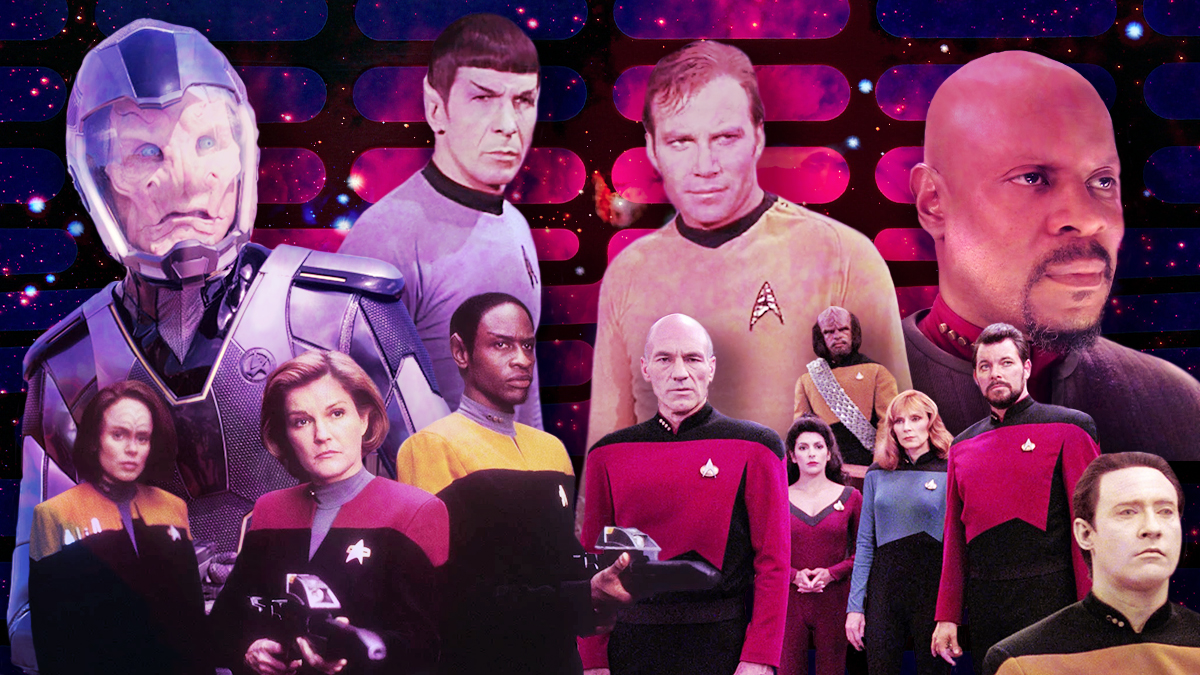Since its debut in 1966, Star Trek has boldly gone to nearly every cultural aspect of modern life. The franchise has included 13 feature films with various crews, numerous board and video games, hundreds of action figures, commemorative plates — you name it, and there’s probably a version with a Starfleet logo on it.
But despite all this exploration into other media and fields, Star Trek remains best on television. And after a long drought, the franchise is finally thriving again in its original medium, despite the bumbling of its parent company Paramount. Even with Picard done and Discovery entering its fifth and final season, multiple series are still in production, including the acclaimed Strange New Worlds.
But as the greatest Trek theme song reminds us, it’s been a long road getting from there to here. The Original Series was canceled after a budget-strapped third season in 1969 and only built its following in syndication. Star Trek: The Next Generation overcame its rocky start to launch a renaissance that lasted throughout the 90s, but the cancelation of Enterprise led to 13 years without a new Trek show on TV.
With all of that behind us, and in the midst of a second Star Trek renaissance, it’s time to look back at the best and worst that the franchise has to offer.
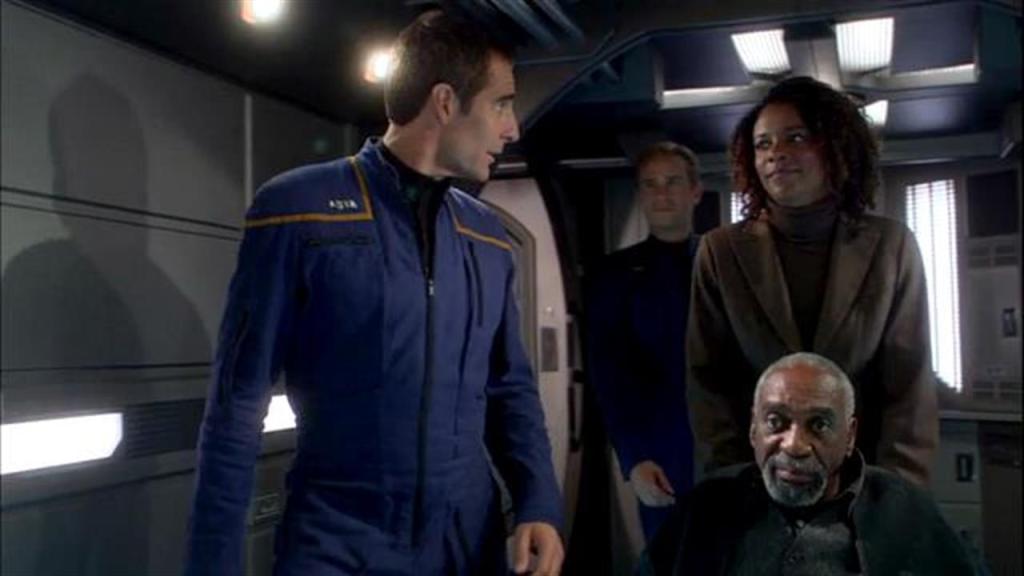
12. Enterprise (2001 – 2004)
Enterprise will always be known as the series that ended the first Star Trek renaissance. What began with The Motion Picture and peaked with multiple excellent television series finally fizzled out with a lackluster series that too often felt perfunctory.
The series certainly had the right idea in mind. Instead of continuing the storyline set out by The Next Generation or revisiting the Kirk era, Enterprise went back to the beginning, showing the rough early days of humanity’s warp-capable exploration and the establishment of the Federation.
Despite those noble intentions, Enterprise mostly floundered, starting with its cast. Trip Tucker made for a fun swashbuckling hero from the beginning, John Billingsley brought a delightful weirdness to his alien Doctor Phlox, and Jolene Blalock brought depths of nuance to the oft-underdressed Vulcan T’Pol, but the rest of the crew got either underutilized or used poorly. The incredibly likable Scott Bakula struggled to get a handle on Captain Archer, Linda Park’s Hoshi Sato got less to do than TOS Uhura, and Travis Mayweather had no qualities beyond being born in space.
However, Enterprise did eventually become a worthy Trek series. The Temporal Cold War gave the NX-01 more immediate relevance to other entries and the Xindi Civil War allowed the series to tackle questions raised by its post-9/11 present. However, even these advancements got overshadowed, partially by Ronald D. Moore leaving Trek to make the morally complex competitor Battlestar Galactica and by the producer’s decision to end the series by foregrounding Riker on the holodeck. In the end, Enterprise’s time never came.

11. The Animated Series (1973 – 1974)
We don’t know what it was like to watch The Animated Series during its original run, but it must have been magical. A beloved series, seemingly gone forever, gets one more crack. While the cheap TV animation of the 1970s must have been a disappointment to even the show’s first viewers, and surely some lamented the loss of Walter Koenig’s Chekov, who was cut from the show for budget reasons (a script written by Koenig was used for the episode “The Infinite Vulcan”), most would take more Trek in any form available.
And to be sure, TAS was a worthy continuation of the original series. William Shatner, Leonard Nimoy, DeForest Kelley and their co-stars proved to be able voice actors, breathing life into decidedly more static representations of their characters. Even better, the series benefited from scripts by some of the best sci-fi writers of the era, including the ever-reliable D.C. Fontana and Ringworld creator Larry Niven.
To be sure, some of the novelty of TAS has worn off. Star Trek has proven to be a reliable franchise, and fans no longer have to be satisfied with the scraps that the studio tosses them. Even the best animated episodes feel diminished by their medium; less a second chance for the Enterprise crew and more a lesser version of the franchise we’ve come to love.
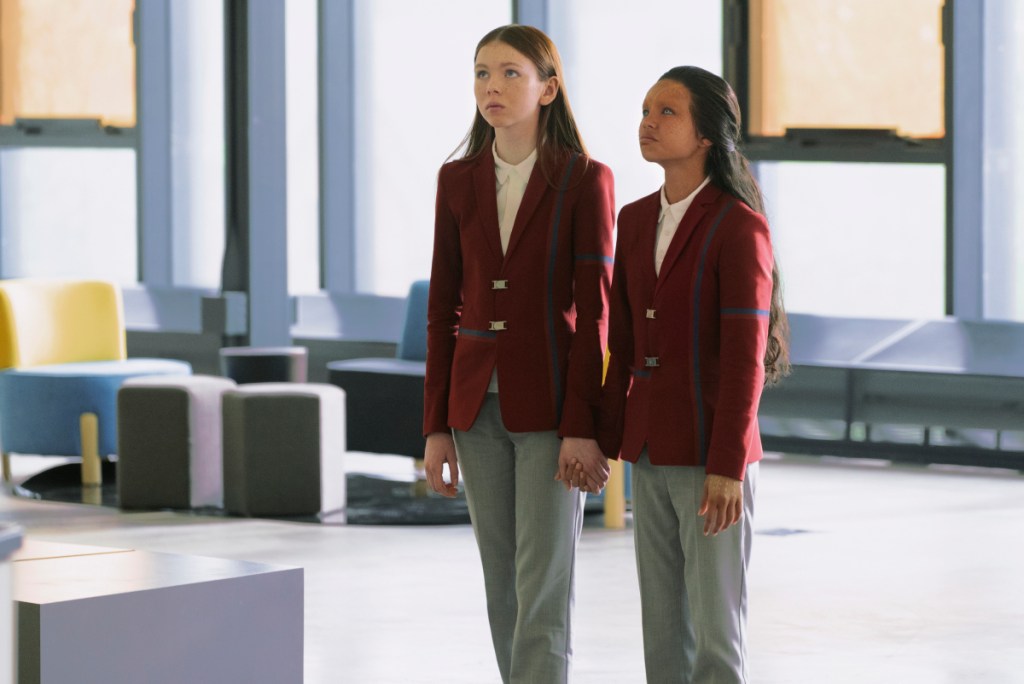
10. Short Treks (2019 – 2020)
Short Treks is exactly what it sounds like: 8-15 minute short movies set in various parts of the Star Trek universe. This small-scale approach means that it’s easy to forgive the Short Treks entries that go awry, and some certainly have. The series closer “Children of Mars” feels like an after-school special with slick music video aesthetics, made all the worse by the fact that it’s a lead-in to Picard season one, perhaps the worst season of Trek ever. The great composer Michael Giacchino finds some delightful turns in the Pixar-inspired “Ephriam and Dot,” but it’s a tonal disaster that makes the Discovery crew look like monsters.
Fortunately, most of Short Treks’ ten episodes are pretty great. “Calypso” takes a horror turn with Aldis Hodge playing a crewman alone on a haunted ship. The hilarious “The Trouble with Edward” stars H. Jon Benjamin as an insecure scientist whose arrogance gives tribbles their mass reproduction abilities. And “Q&A” foregrounds the wonderful Strange New Worlds, as Spock and Number One bond over show tunes while stuck in a turbo lift.
Unfortunately, the inessential nature of Short Treks cuts against these stronger entries as well. Buried someplace on the Paramount+ app, Short Treks rarely have strong relevance to mainstream stories, and thus can be easily ignored, the good and the bad.

9. Picard (2020 – 2023)
Picard ended with a miracle season, a perfect mixture of fan service and proper character development. Deftly helmed by showrunner Terry Matalas, Picard season three caught up with the beloved Captain and his crew twenty years later to find them grown older and different, not just stuck in their old routines. Combined with exciting newcomers, especially the stick-in-the-mud Captain Liam Shaw, Picard season three whet viewers’ appetites for more adventures, hopefully in a series called Star Trek: Legacy.
Notice how I keep specifying “Picard season three”? Because up until that season, Picard was an absolute disaster, the worst that the franchise ever put on screen. To be fair, it’s easy to understand Patrick Stewart’s trepidation at bringing back the old crew, worrying that the show would be a sad rehash of thirty-year-old stories. But in trying to avoid easy nostalgia, the first two seasons of Picard seemed to hate the very franchise it continued. The first season featured the brutal on-screen dismemberment of Icheb, a domesticated Riker with a pizza oven, and Starfleet officers decrying the “pure fucking hubris” of Picard. Season two was even worse, with its ‘Q has dementia’ plotline and a misguided approach to the Borg Queen.
Fortunately, the Captain eventually righted the ship and gave us the story we wanted. Notably, the third season didn’t achieve success by avoiding darker moments. Picard has painful confrontations with Ro Laren and Beverly Crusher, the loss of a child threatens to tear apart Riker and Troi, and Worf straight-up beheads a dude. But all of these unpleasant notes come from a place of respect for the characters, building on what came before instead of destroying it for shock value.
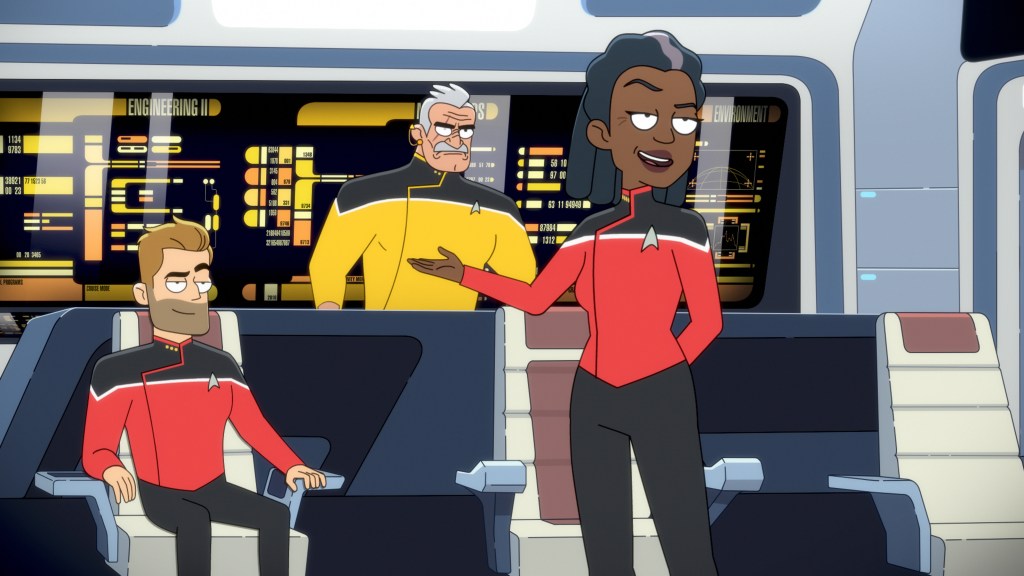
8. Lower Decks (2020 – Present)
There’s a unique joy to watching the Star Trek animated series Lower Decks, something akin to getting back together with old friends. Created by one-time Rick and Morty showrunner Mike McMahan, Lower Decks follows a quartet of ensigns on the USS Cerritos, a Starfleet ship tasked with mundane missions. With lower stakes, the characters have more downtime, allowing them to debate the merits of TNG’s Rambo riff Roga Danor or play a Klingon DVD game hosted by Martok (voiced again by J. G. Hertzler). In these moments, Trekkies can’t help but chuckle with recognition. How is it that anyone else in the world laughs about these arcane parts of Trek lore?
But at the same time, Lower Decks can get somewhat exhausting. The jokes come fast and furious, as leads Tawny Newsome, Jack Quaid, Eugene Cordero, and Noël Wells sometimes shout their lines (a fact referenced in the recent crossover with Strange New Worlds). And at times, the multitudinous in-jokes can become the point of the episode, banking way too much investment in the humor of a Tom Paris commemorative plate.
However, Lower Decks has also proven itself to be capable of genuine character exploration. Over the course of the series, Newsome’s Beckett Mariner has revealed herself not to be a too-cool-for-school rebel from an 80s “slobs vs snobs” comedy, but an incredibly capable future officer whose difficult relationship with her mother drives her to self-sabotage. Wells’s Tendi fights against stereotypes about Orion pirates and sex slaves to establish herself as a good-hearted scientist. In these moments, LD finds its jokes in character motivations, not just in winking references.
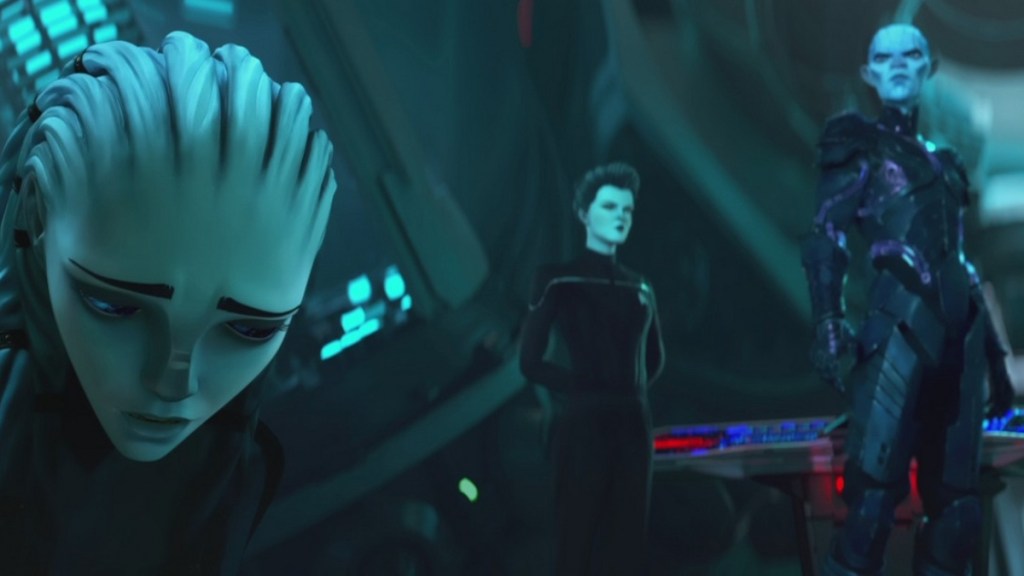
7. Prodigy (2021)
We really hate putting Prodigy so low. As a children’s animated series with ties to the still-underrated Voyager, it’s easy to see why so many Trekkies have skipped over it. That oversight certainly had something to do with Paramount’s boneheaded decision to remove it from Paramount+, the so-called “Home of Star Trek.” But those who did catch Prodigy, especially with their Trek-agnostic kids, discovered a truly delightful series that captured everything great about the franchise.
Set deep in the Delta Quadrant, Prodigy follows a group of alien teens, led by Dal R’El (Brett Grey) and Gwyn (Ella Purnell), who escape a prison colony via the abandoned Starfleet craft the USS Protostar. With help from a holographic Captain Janeway, the kids learn to embrace the ideals of the Federation, while also uncovering their connection to the evil overlord the Diviner (John Noble). The kids’ idealism and desperate situation allows them to reaffirm Starfleet’s first principles, even as they encounter adults from the Federation who have forgotten the meaning behind the symbols they wear.
By making outsiders the focus, Prodigy serves as a perfect entryway into Trek for its younger primary audience. But that doesn’t mean it avoids deep cuts. The main cast counts among its number a Tellurite (voiced by the always hilarious Jason Mantzoukas) and a Medusan (Agnus Imrie). Everyone from Spock and Crusher to Odo and Chakotay have appeared as holograms, and the series even featured the return of one-offs Admiral Jellico and the Outrageous Okona. Through Prodigy, even the most uninitiated Trek fan gets to see the franchise’s goofiest characters and most inspiring ideals.
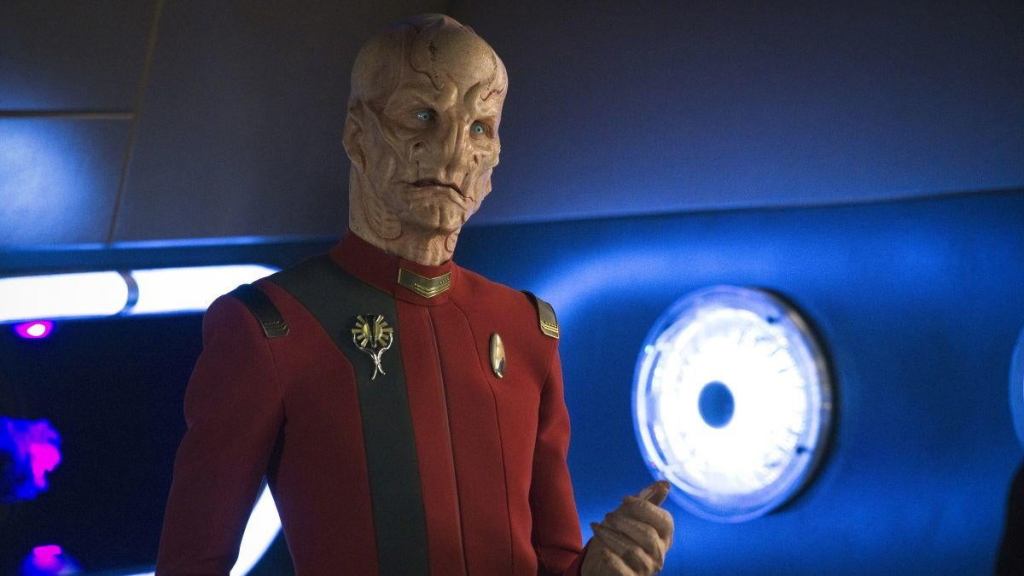
6. Discovery (2017 – 2023)
Strangely, Discovery only gets better as other Star Trek series embrace the standard form. When it first launched under the direction of the often wonderful but always idiosyncratic Bryan Fuller, Discovery aggressively separated from and connected to everything that came before. Instead of taking advantage of its likable cast, Disco focused almost entirely on Michael Burnham (Sonequa Martin-Green), the heretofore unmentioned adopted sister of Spock. Season-long serialized arcs often built to disappointing reveals (all the dilithium in the 32nd century burned because a Kelpian had a temper tantrum?) and nobody asked to watch a topless Klingon woman commit sexual assault.
But as Strange New Worlds and Lower Decks become more prominent during the second Trek renaissance, Disco’s oddities can be accepted as the experiments they were meant to be. After all, Fuller intended the series to be an anthology, focusing on different characters and timelines each season. That offbeat spirit remained in the show, even after Fuller left production. As it heads into its fifth and final season, Disco remains committed to taking Trek into new, uncharted territory.
Nowhere is that more clear than in its most controversial aspect: the crying. Emotion has always been a key part of Star Trek, represented by McCoy in the triumvirate with Kirk and Spock. But with Disco, emotion became a valid form of problem-solving, taking its place beside the franchise’s favored approach, logical thinking. Even if the crying in Discovery doesn’t work for everyone, there’s no denying that it serves the franchise’s core goals by finding new ways of understanding humanity.
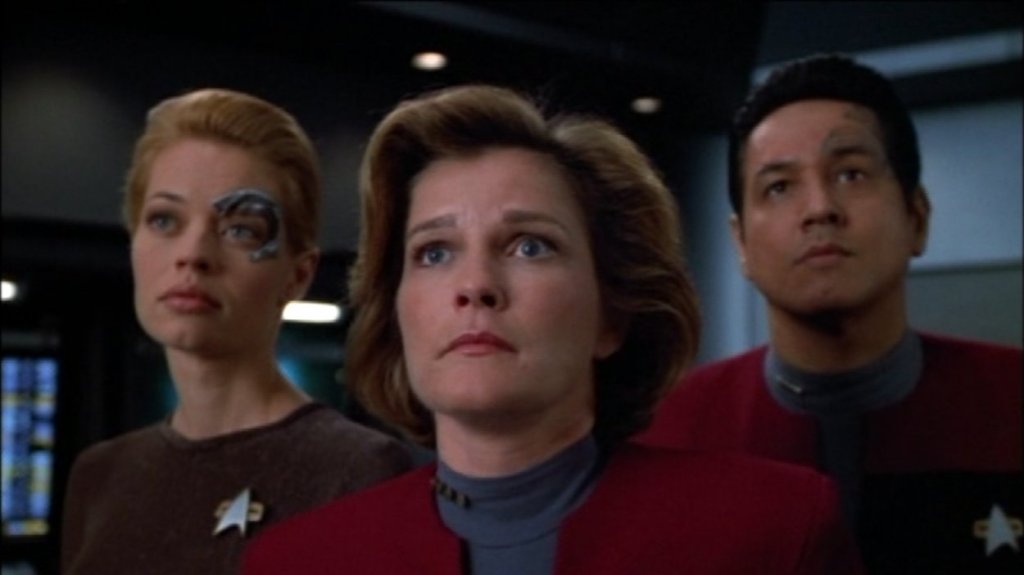
5. Voyager (1995 – 2001)
Most Trek series get off on the wrong foot, but few screw things up like Voyager. Despite a fantastic premise, in which Captain Janeway strands her crew in the Delta Quadrant and is forced to work with Maquis dissidents, the series stumbles through some terrible decisions. Not only does it try to push the incredibly stupid and ugly Kazon as the chief enemy race (the way-better Vidiians are right there!), but it also acts like Neelix, who is controlling and petty with his two-year-old girlfriend Kes, is a lovable goof. Even for a Rick Berman-produced show, that’s creepy.
You do have to get over the fact that the show chooses standalone episodes over serialization, basically killing any larger tension and most character development, but the show quickly makes it easier to forgive that shortcoming by telling some fantastic single episodes. By the time the fantastic Jerry Ryan joins the show in season four as ex-Borg Seven of Nine and the Kazon get left behind, Voyager delivers some all-time great Trek episodes, including “Year of Hell” and “Blink of an Eye.”
Even better, the series settles into fleshing out its primary characters. Yes, this does mean that some go by the wayside — not just the departed Kes, but also Chakotay becomes a big nothing, Paris and B’Elanna get pushed into the domestic bliss corner, and Kim stays an ensign. But the tensions between Seven of Nine, Janeway, and the Doctor make for a classic Trek trio, allowing the show to explore the nature of humanity while also making the Captain the most adventurous of Starfleet leaders. Plus, Voyager gives us the best Trek kid ever in Naomi Wildman and no we will not hear counterarguments.
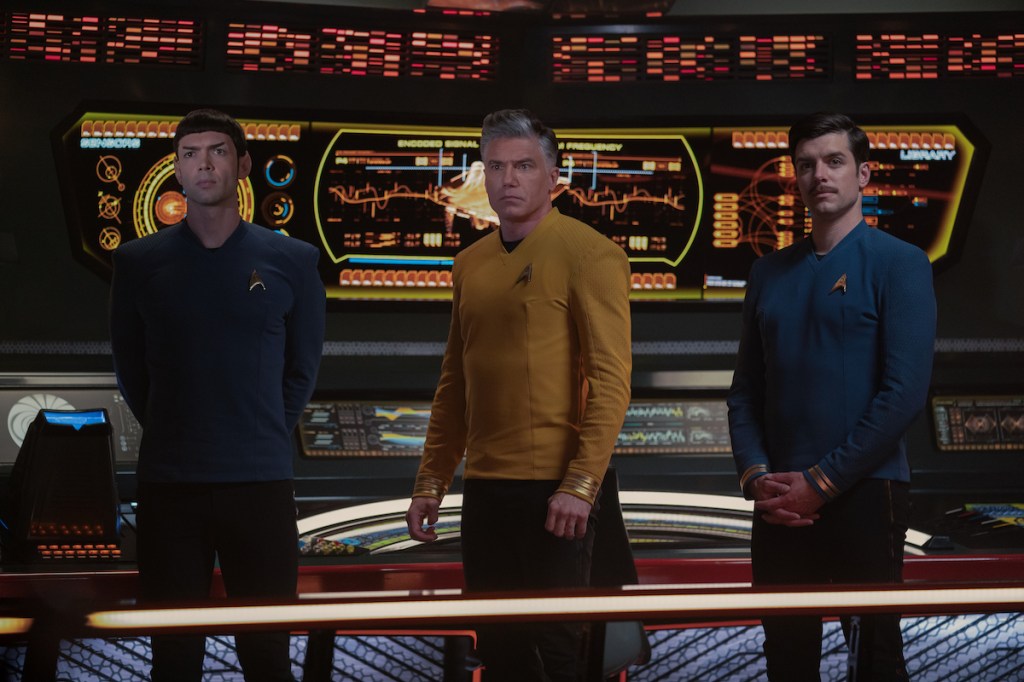
4. Strange New Worlds (2022 – Present)
Aside from TOS, nearly every Trek series has started off with a bad season or two. But that’s not the case with Strange New Worlds, which has not had a single bad episode yet.
SNW returns to the early days of the USS Enterprise, following the adventures of Kirk’s predecessor Captain Christopher Pike and a crew that includes young Spock and Uhura. What could have been a reactionary retreat to a safe era of Trek, complete with a straight white guy in the captain’s chair, has turned out to be Trek at its best. Anson Mount makes for not only an affable, big brother of a leader as Captain Pike, but he’s also a remarkably generous performer. Time and again, Mount finds new ways of supporting his scene partners, whether it’s playing a baffled straight man when Spock gets overwhelmed by his human side or reassuring his security chief La’an with words of gentle wisdom.
Thanks to Mount’s ability to share the spotlight, SNW has been able to develop the best ensemble cast of any Trek series, a remarkable feat given its use of well-known characters. Ethan Peck has successfully established his own take on Spock, playing a more emotional version of the character that still feels like someone who will grow up to be Leonard Nimoy. Celia Rose Gooding plays Uhura as an incredibly talented Ensign who doesn’t yet know that she’ll become the legendary Starfleet comms officer. Babs Olusanmokun, Jess Bush, and Rebecca Romijn fully round out characters barely glimpsed in TOS.
With this outstanding cast and crew, SNW puts a modern sheen on TOS themes and even episodes, without diverging too hard from what came before. Case in point: the season one finale “A Quality of Mercy,” which revisits the classic episode “Balance of Terror” in an alternate reality. It’s our love for Pike and other characters that makes us want them to sacrifice a better life in order to restore the original timeline, even if it means Pike must accept his fiery fate.
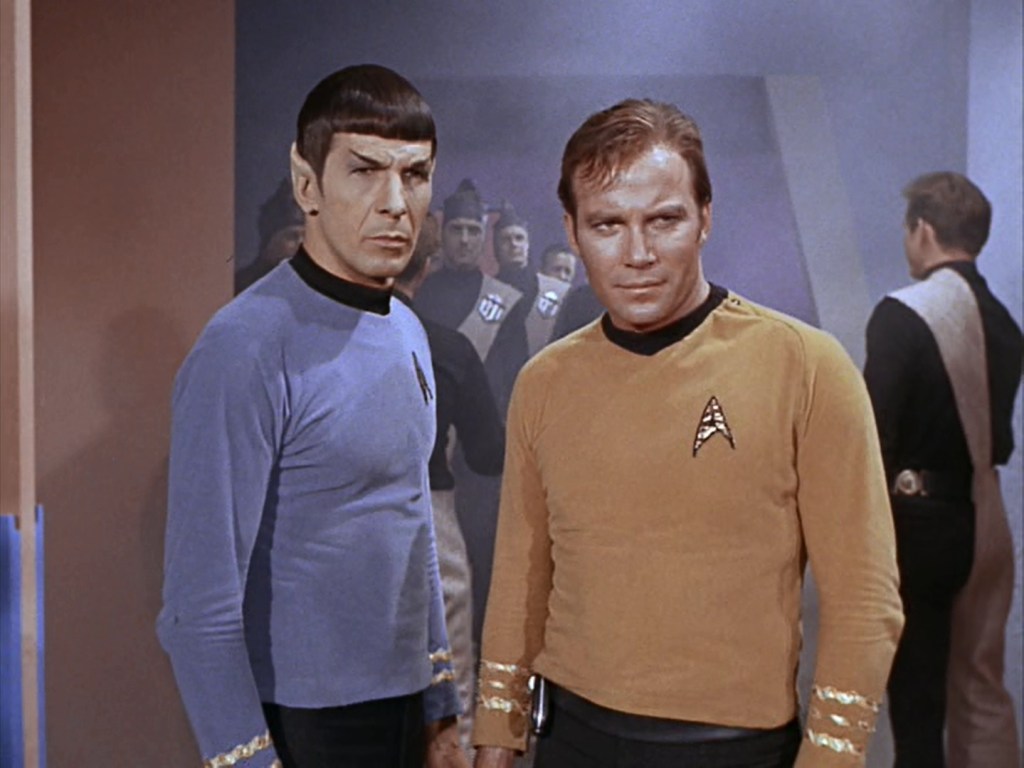
3. Star Trek (1966 – 1969)
Newcomers to the franchise sometimes struggle with the original series, finding it hopelessly dated. TOS does definitely embrace the aesthetics of its time, with its miniskirt uniforms, technicolor background lighting, and, yes, space hippies. But like The Twilight Zone, its closest counterpart of the era, both in terms of themes and influence, Star Trek used its outlandish premise to speak to the heart of the human condition.
At this point, it’s easy to make jokes about William Shatner’s idiosyncratic delivery, but there’s no denying how well it works for Captain Kirk. Every pregnant pause, every sparkle in his key-lit eyes reveals a genuine love for exploration. When combined with the logical Spock and the irascible McCoy, Star Trek establishes a perfect formula for spacefaring television adventures. Even as they encounter low-budget baddies like the costume-shop Gorn or the blocky supercomputer Landru, Kirk and Co. remain focused on the human element.
Thanks to this approach, TOS perfected the sci-fi tension between high-concept ideas and terrestrial concerns. Gene Roddenberry and writers such as D.C. Fonatana and Gene L. Coon got to grapple with issues such as racism and the Vietnam War with stories about Klingons and Romulans. As rich and fantastic as TOS got, it never lost the humans at the center, making it ripe for continuing adventures and spin-offs.
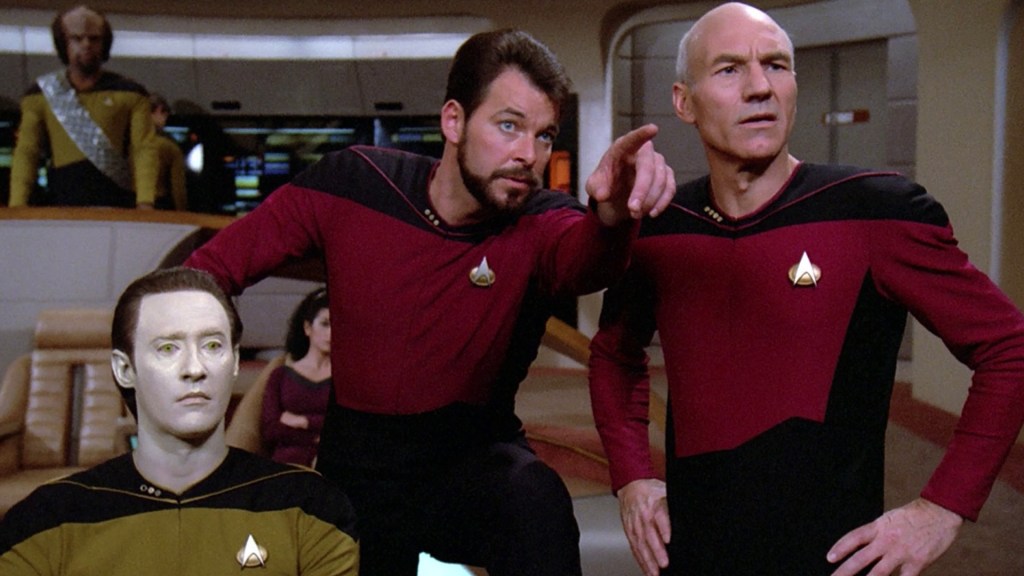
2. The Next Generation (1987 – 1994)
Patrick Stewart didn’t empty his suitcase. That’s how certain he was in the failure of Star Trek: The Next Generation. Stepping in for the hammy masculinity of the established Captain Kirk, the patrician, thoughtful (and bald) Jean-Luc Picard seemed like an ill-fit for the franchise, even with the more traditionally heroic Will Riker in tow. And for the first two seasons, Stewart seemed to be correct, especially when Roddenberry and others tried to restrict the TNG cast to TOS-style stories.
But by the time it hit its third season, TNG perfected the Star Trek formula, embracing what was so great about TOS while also emphasizing its most underutilized asset, the ensemble cast. Instead of putting Picard at the center of a trio, which initially included Data and LaForge, the Captain became the imperfect parent of a family filled with interesting personalities. Debates about morality and philosophy occurred around a table in the ready room, where several voices chimed in on important issues.
This isn’t to say that TNG didn’t grapple with big ideas like its predecessor. “The Measure of a Man” raised questions about the dignity of life, “Chain of Command” looked at the cost of war, and “Ensign Ro” considered the morality of resistance. It’s just that all of these episodes came from a place of love and investment in the characters. We tuned in every week not just to seek out new life and new civilizations, but to spend more time with interesting characters whom we loved, making even the most outlandish adventure feel as comfortable as a poker game with old friends.
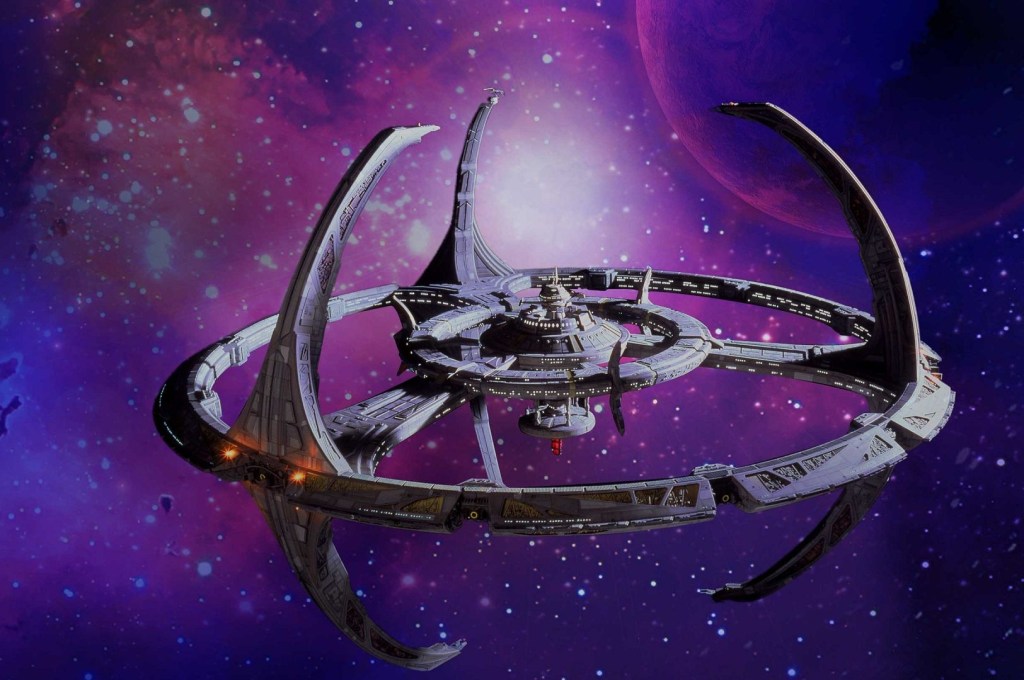
1. Deep Space Nine (1993 – 1999)
What initially seemed like too far a departure from the Star Trek formula has now become the standard hipster answer for ‘best Trek’. But, you know, DeepSpace Nine is the best Trek!
DS9 veered from its predecessors in several important ways. Instead of focusing on a space-faring Enterprise, it remained on the titular space station (although the addition of the Defiant in season three allowed the show to indulge in standard “ship and crew” storylines). It dealt directly with religion, thanks to its engagement with the Bajoran prophets who chose Commander Sisko as their Emissary. And it took a notably darker tone as the space station shifted from the outpost at the edge of Federation space to the frontline of the massive Dominion War.
Despite these diversions, DS9 combined the best of the two previous series. Like TNG, DS9 boasted an excellent cast of interesting characters. As Benjamin Sisko, Avery Brooks played the best dad in television history, a grieving widower whose ideals often put him at odds with his Starfleet superiors. Armin Shimerman, Aron Eisenberg, and Max Grodénchik singlehandedly redeem the Ferengi, turning them from annoying and ugly enemy aliens to complex creatures with their own morality. And Nana Visitor’s Kira Nerys found layers of nuance in her Bajoran freedom fighter forced to work with the Federation.
With these complex characters in place, DS9 told some of the most complex and compelling stories in Trek history, episodes that both challenged and upheld the franchise’s core utopian ideals. “In the Pale Moonlight” found Sisko bending his principles to force a treaty with the Romulans and “Far Beyond the Stars” reaffirmed the importance of science fiction. The show even made space for some of the best comedic episodes in Trek history, such as the baseball romp “Take Me Out to the Holosuite” and the 30th-anniversary special “Trials and Tribble-ations.” Deep Space Nine showed Trek at its most humane, ambitious, complex, and idealistic, making it the best show in the franchise.
